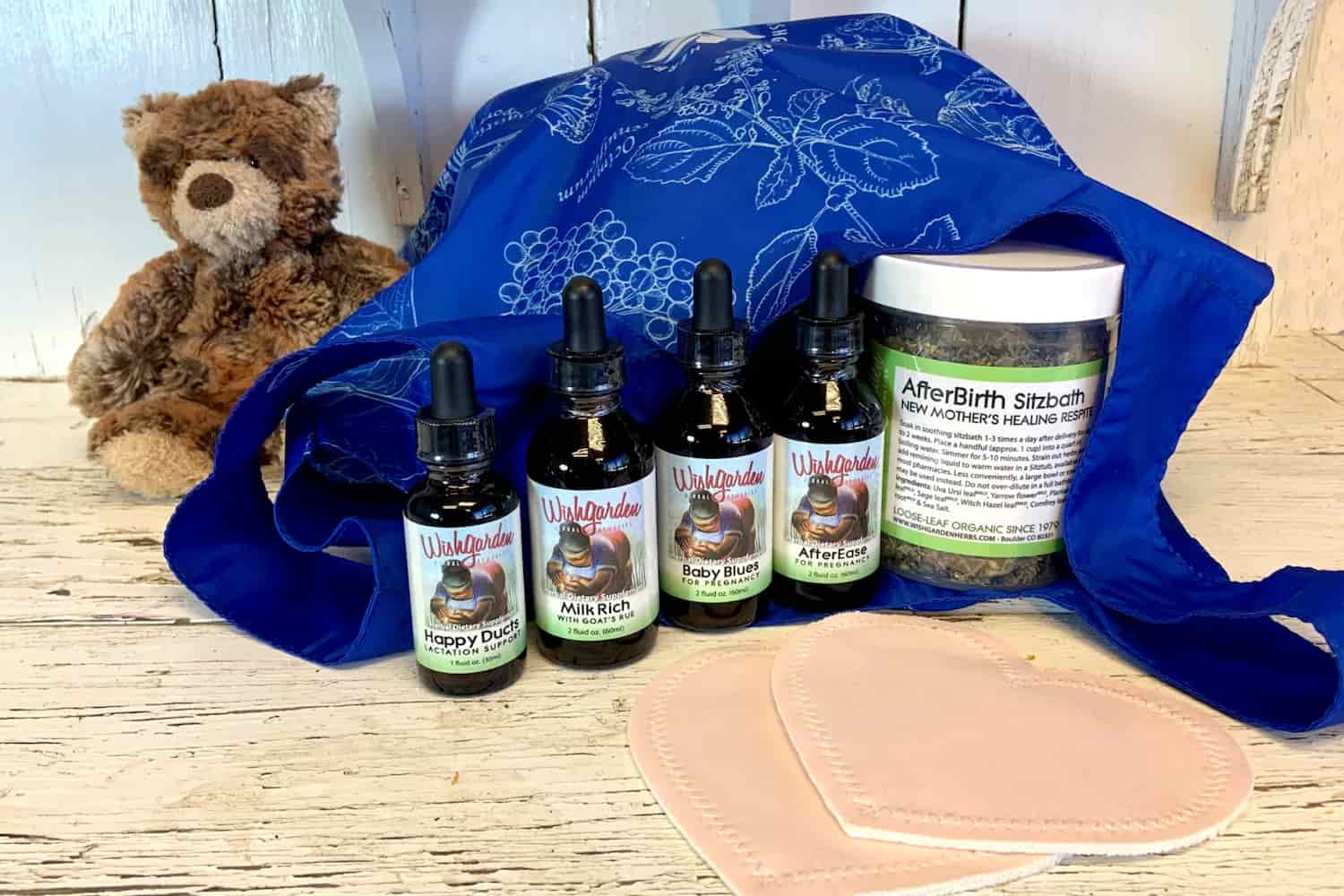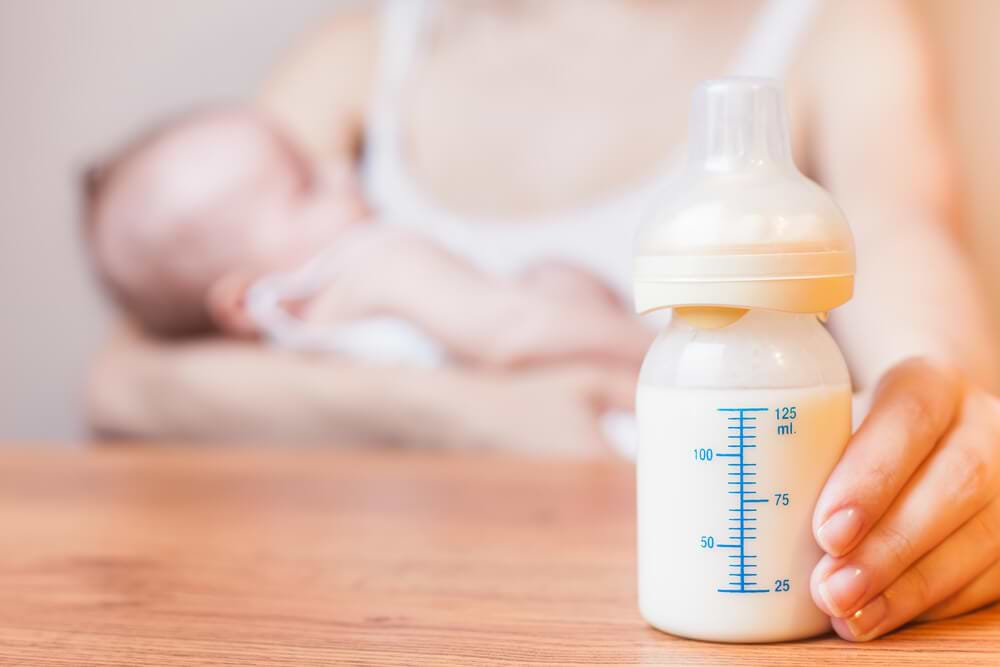In my last post, I mentioned some of the nutritional benefits of breast milk over infant formula, which deserves to be expanded upon before diving into some herbs that support a rich milk supply. I've highlighted colostrum and the different types of sugars found in breast milk that support a healthy immune system and microbiome, or the community of microorganisms (think bacteria, fungi...) that inhabit the human body, but there are also millions of live immune-boosting white blood cells found in breast milk that may assist in the development of organs.
Breast milk contains more than 1,000 proteins, made up of building blocks known as amino acids, of which there are more than 20. These amino acids are put back together in the body into various proteins and protein structures that help the baby grow and develop everything from an immune system to neurons in the brain. Additionally, growth factors support the development of glands, which secrete hormones that serve as chemical messengers that communicate between tissues and organs to maintain proper functioning.
Speaking of hormones, breast milk also contains many hormones that regulate such things for the baby as its circadian rhythm, or sleep-wake cycle (melatonin), and appetite (ghrelin). As mentioned in my previous post, nutrient content of breast milk can vary based on the time of day. As with melatonin, researchers in Israel found that mothers produced more melatonin in their breastmilk in the evenings — yet another way in which formula will never replicate the inherent wisdom of mother's milk!
Not only does the nutritional content vary based on time of day, but also with the stages of the baby's growth. For example, the first milk produced after the baby is born is colostrum, as discussed before. In the beginning, mothers typically produce very small quantities (less than 2oz) in a 24-hour period, but this is because the baby's tiny stomach can only hold this amount.
Fortunately, this liquid gold is all about quality, not quantity! As the baby grows, breast milk will have the same ingredients as colostrum, but the amounts of the ingredients will change to better suit the baby's needs. It's worth mentioning that breast milk is rich in vitamins and minerals, but colostrum contains higher concentrations of fat-soluble vitamins A, E and K.
In the baby's 4th week, breast milk will have fully matured and will remain consistent overall, but could change slightly based on the day or the feeding. For example, as a baby begins discovering the world around them, everything seems to go in the mouth! To protect the baby, breast milk will increase production of bacteria-fighting enzymes. At six months, as solid foods are introduced, milk should still make up the majority (more than 90%) of the baby's diet.
This brings me to the question: what can a mother safely do to keep her milk supply up for the recommended 2-year goal of breastfeeding?
A lactating mother, or a woman in her 4th trimester (the period between birth and 3-4 months of age; the time when the infant is establishing feeding patterns), requires an additional 500 calories per day over the minimum recommendation of 1,800 calories per day (daily caloric needs vary from person to person).
But not all calories are created equally. For a mother to keep her milk supply rich, those need to be nutrient-dense calories. Lactation requires more carbohydrate intake than pregnancy to replace the glucose used to make lactose in breast milk (protein and fat requirements stay the same as pregnancy).
Prolonged inadequate intake of nutrients like water-soluble vitamins B6 and B12, and fat-soluble vitamins A and D, can create nutrient deficiencies most likely to show up in breast milk. Overconsumption of caffeine may reduce the bioavailability of iron in the breast milk. If the mother's diet isn't supplying proper nutrition for her breast milk, her body will preferentially redirect nutrients that would otherwise support her own body structure and function to the breast milk for the baby. This is another reason why it's so crucial for the mother to consume a well-balance whole foods diet.
Some of the most nutrient-dense foods on the planet are herbs! Mothers have long used certain herbs, appropriately termed galactogogues, originating from the Greek word galaktos meaning "from milk" and -agogue, meaning "to induce the secretion of," to encourage a robust milk supply. Below, I've highlighted several herbs well-known for supporting lactation:
Goat's Rue
An herbal galactagogue belonging to the pea (legume) family, goat's rue has a history of use in supporting blood sugar balance and, as a bitter herb, protecting the liver. In mothers lacking glandular breast tissue, goat's rue may be helpful.
Fenugreek
A galactagogue also in the pea (legume) family, fenugreek lends a bitter taste that supports digestion; however, in the US, it's most known for encouraging breastmilk production and the rate of weight gain in newborn babies. For some women, fenugreek may be upsetting to the stomach, in which case, goat's rue is the better choice.
Nettles
Nettles can be used to support optimal health for most people. you'll typically find Nettles in nutritive tea blends and I've often thought of them as an herbal multivitamin of sorts. Nettles support the absorption of iron by supplying both non-heme iron and vitamin C packaged together. They contain potassium, vitamin K, B-vitamins, calcium, magnesium, amino acids, and antioxidants. As a galactagogue, Nettles are rich in chlorophyll, which some lactation experts believe is necessary for producing milk following birth.
Oatstraw
Rich in the minerals iron, calcium, magnesium, silica, zinc, and manganese, oatstraw is also a nervine herb that provides mood support for mom after birth. Oatstraw has a reputation for being a gentle restorative for those who are tired and depleted.
Fennel
Not only is fennel a galactagogue, but a carminative herb that can help dispel gas bubbles for a baby with colic. It's said to be particularly nourishing to the brain and eyes and was used by the Pomo natives as an eyewash. The Cherokee gave fennel to both women during childbirth and infants for digestion.
Raspberry leaf
Supplying a trace minerals and vitamins, raspberry is a deeply nourishing herb and wonderful compliment to Nettles in a tea.
Alfalfa
Another member of the pea (legume) family, alfalfa leaf promotes the development of glandular breast tissue. Alfalfa is not only a galactagogue, but may increase the fat content of breastmilk. Similar to and in combination with Nettles, alfalfa is a deeply nutritive herb containing chlorophyll, calcium, magnesium, phosphorus, zinc, potassium, silicon, beta-carotene, B-vitamins, vitamin C, vitamin K, and several amino acids. Alfalfa is said to support the pituitary gland, the center for lactation hormone production.
Blessed Thistle
As a bitter herb, blessed thistle is liver supportive, while encouraging the flow and richness of the milk. Similar to oatstraw, blessed thistle offers postpartum mood support.
References
- Ballard O, Morrow AL. Human milk composition: nutrients and bioactive factors. Pediatr Clin North Am. 2013; 60(1):49-74.
- "Breast Milk Composition: What's in Your Breast Milk?" Medela, 24 Oct. 2017, www.medela.com/breastfeeding/mums-journey/breast-milk-composition.
- Dewar, Gwen. "Using Breast Pumps: Does the Time of Day Matter?" The Authoritative Parenting Style: An Evidence-Based Guide, 2015, Melatonin, breast milk, and breast pumps: How the timing of milk production might affect infant sleep.
- Hassiotou F et al. Cells in human milk: state of the science. J Human Lact. 2013;29(2):171-182.
- Zhang Z et al. Amino acid profiles in term and preterm human milk through lactation: a systematic review. Nutrients. 2013;5(12):4800-4821.
Writer Danielle Cicak is the Northern Colorado and Wyoming Sales Representative and Regional Educator for WishGarden Herbs located in Louisville, Colorado. In 2003, Danielle began her career working in the supplement aisles at Natural Grocers. Inspired to help others with their health and wellbeing, she pursued an education in holistic nutrition from the Nutrition Therapy Institute in Denver, Colorado. As a Master Nutrition Therapist (MNT), Danielle served as a Nutritional Health Coach (NHC) before advancing to become the NHC Development Specialist where she led and developed the NHC training program for Natural Grocers. As a Colorado native, Danielle is thrilled to work with another local, family-owned business that promotes health and activism through education: WishGarden Herbs! In her free time, she enjoys spending time with family and friends, creating healthy dishes in her kitchen, and enjoying the beauty Colorado has to offer!
For educational purposes only. This information has not been evaluated by the Food and Drug Administration. This information is not intended to diagnose, treat, cure, or prevent any disease, or to sell any product.
Recommended Products
Further Reading














